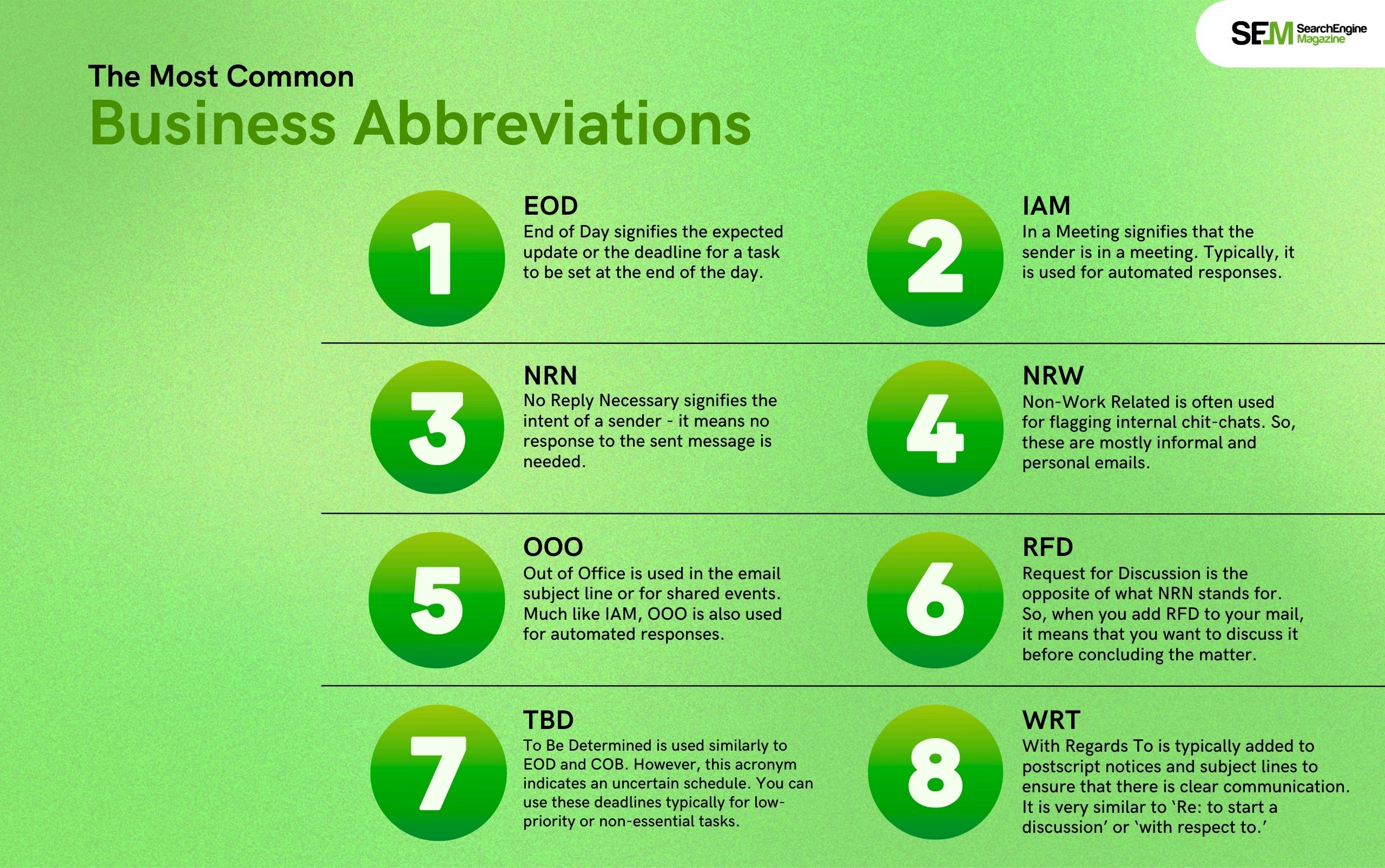How Data-Driven Hiring Reduces Costs and Improves Workforce Efficiency
Mar 29, 2025

Mar 29, 2025

Mar 29, 2025

Mar 29, 2025

Mar 29, 2025

Mar 29, 2025

Mar 27, 2025

Mar 27, 2025

Mar 25, 2025
Sorry, but nothing matched your search "". Please try again with some different keywords.


To cut a long story very very short, COB is an acronym for ‘Close of Business.’ Typically, the acronym refers to the end of a day at work. Originally, it would refer to the end of the day in New York’s financial markets – the term defines business hours in the United States.
Yep, the term has its roots in the US business hours – in the United States, this is the standard mode of communication to set deadlines for tasks to be finished by 5 pm EST (Eastern Standard Time).
In addition, you can use this acronym interchangeably with EOD (End of Day), EOB (End of Business), COB (Close of Business), and COP (Close of Pay).
So, in this blog, we will touch upon some of the most common Email basics, including COB, and touch upon the primary difference between COB and EOD.
COB is not very different from EOD. Generally, COB meaning in email stands for Close of Business – it’s an abbreviation of sorts.
However, it typically does refer to an expectation that the assigned task will be completed before the end of the day, that is, standard business hours. So, most working professionals end up assuming that both EOD and COB mean before the end of 5 PM.
Notably, international and national brands might have slightly different understandings of what ‘end of day’ means.
As a result, if any company has headquarters in California, a resident of Virginia would assume the meaning of COB to be at 8 PM, that is, their local time. However, it is always best to ask all involved parties for clarification in case of any uncertainties.
Thankfully, most brands are prone to avoiding confusion by choosing to establish clear guidelines. Additionally, it is also possible for businesses to follow GMT (Greenwich Mean Time) apart from adhering to their local time zones, keeping people on the same page.
Also, in this context, it is vital to remember that EOD and COB are used interchangeably often. So, in both cases, it is safe to assume that the deadline is any time before 5 PM.

Now that you have an idea about COB meaning in email, let’s touch upon the difference between COB and EOD with the help of an example.
So, for instance, you are prone to using both EOD and COB in your emails involving professionals across time zones and countries. Naturally, in that case, you have to set clear expectations.
In that context let’s assume you are working from New York and you have to communicate with a team working from London. So, the first time you communicate with the London team, you have to set the communication guidelines for all future interactions.
Don’t forget you have to share the same with everyone involved via emails, calls, and video meetings. Also, if there are any updates on important tasks or a deadline for finishing a task then it is best to avoid using acronyms at all. Instead, just add the specific time zone, time, and date to your email.
Please Note: Example 1 highlights a standard situation while Example 2 highlights an urgent situation where specific details need to be mentioned.
Hi Akram,
It was nice catching up with you early in the day about your promotional strategy for the internal website. So, please share your final projections with me by EOD the day after tomorrow, EST.
Best,
Barsha
Hi Ankita,
I’m all set for the presentation at the end of the month. However, it would be great if you could share the completed slides by Wednesday, at 5;00 PM EST.
Thank you,
Barsha
Sometimes, it might feel like abbreviations have started resembling Gen Z lingo – it might start to feel unprofessional and informal.
However, once upon a time, these abbreviations were an essential method for enabling business communication. In the bygone corporate days of papers, pens, and typewriters, abbreviations would boost the efficiency of business communication.
Outside your office, when you are communicating cross-country conversations, you will see that abbreviations can keep the expenses of telegrams very low.
Later, as pagers and mobile phones started arriving in workplaces, abbreviations stayed essential. With reduced attention spans, limited space, and less time, sending ‘ASAP’ makes more sense than typing ‘as soon as possible’ – in today’s fast-paced world, even a few minutes are of the utmost importance.

While there are so many abbreviations that we use daily, only a few are vital as clarifying phrases and statements. So, these are the ones that alert recipients about task updates, deadlines, and due dates.
However, modern clients are typically able to manage long messages. In spite of that, many working professionals use older abbreviations while communicating with each other.
In this context, the most essential abbreviations are as follows:
Barsha Bhattacharya is a senior content writing executive. As a marketing enthusiast and professional for the past 4 years, writing is new to Barsha. And she is loving every bit of it. Her niches are marketing, lifestyle, wellness, travel and entertainment. Apart from writing, Barsha loves to travel, binge-watch, research conspiracy theories, Instagram and overthink.
View all Posts
How Data-Driven Hiring Reduces Costs and Impr...
Mar 29, 2025
Why Headless CMS Works Well for EdTech Startu...
Mar 29, 2025
Building Topical Authority to Excel in Search...
Mar 29, 2025
The Impact of Professional Recruitment Servic...
Mar 29, 2025
The 13 BEST Quillbot Alternatives In The Mark...
Mar 29, 2025

